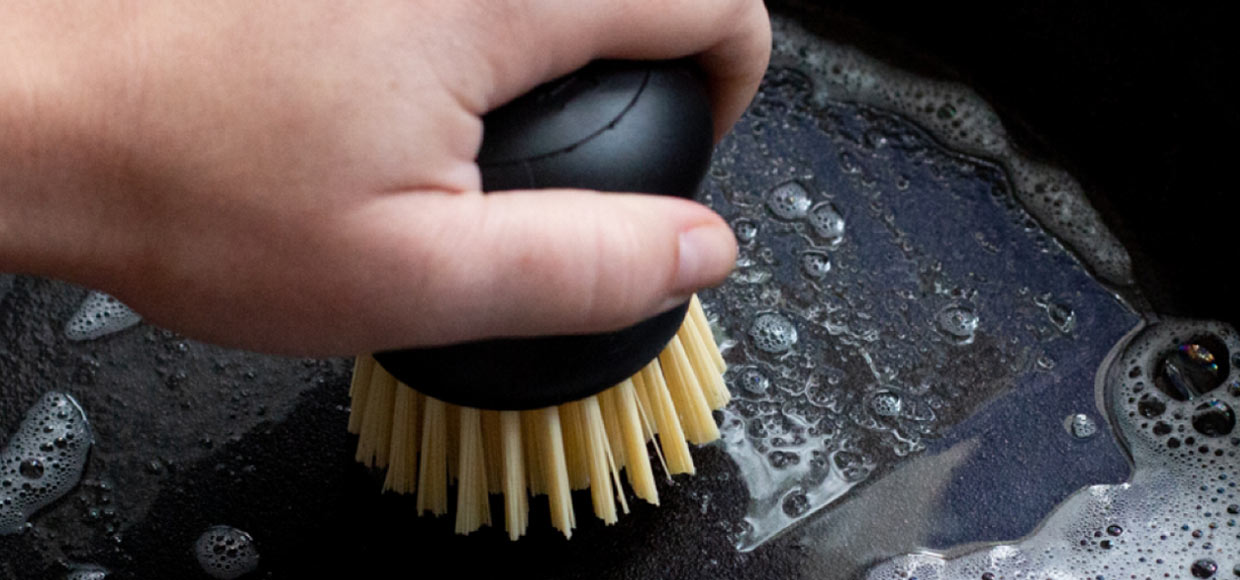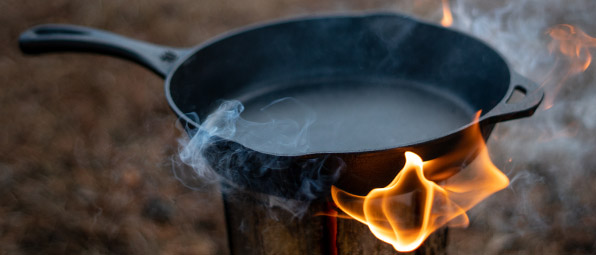Cast Iron Care

Guide to Cast Iron Care: Cleaning, Rust Removal & Storage

Contents
- Cast Iron Cleaning: To Soap or Not to Soap
- What Causes Rust & How to Fix It
- Removing Tough & Stuck on Mess
- The Best Way to Store Cast Iron
Cast Iron: Durability meets Outdoor & Indoor Cooking
Cast iron cookware is known for its durability to withstand the elements – whether cooking on an open fire, grill, or stove, cast iron performs flawlessly. However, cleaning and storing them is altogether another ball game.
Handle your cast iron like a pro with the expert guidance on cleaning, storing, and removing rust , so you can extend your cookware's retirement.
Cast Iron Cleaning: To Soap or Not to Soap
Let's end the great debate whether to soap or not and avoid damage or rust to the cookware.
- You could use mild dish soap or cast iron cleaner to clean your cookware. The seasoning on Cabela’ cast iron is resilient and it can withstand a bit of water, soap, and a good scrub.
- The more you use your cast iron, the better it will work for you.
- You can rid the stuck-on food by scouring the surfaces with coarse salt and a bristle brush.
- Wash your cast iron with hot water while the pan is still warm.
- Dry it immediately to prevent rust.

A common misconception about cast iron cookware is that you need to throw it out when it begins to rust. In fact, you don't need to. Remove the rust by scrubbing these stubborn areas with cast iron scrubber. Once the rust flakes off, re-season your cast iron cookware.
What Causes Rust & How to Fix It
A common reason for rust on your cast iron is its prolonged exposure to moisture – whether you are soaking it in your sink or air drying it, there is a chance for your cookware to become rusty.
Here’s how our experts clean it to avoid rust on the cookware.
Easy 3-Step Fix for Your Rusted Cast Iron
Step 1: Use a cast iron scrubber and scour the surface with warm soapy water. Since there will be a need to re-season the cast iron, use the soap, rinse and hand dry it thoroughly.
Step 2: After drying, season your cast iron by applying a thin layer of oil – on the inside and the outside.
Step 3: Place your cast iron cookware upside down on the top rack of your oven and place an aluminum foil on the bottom rack to catch the excess oil from the cookware. Lodge Cast Iron suggests baking it at 450–500°F for an hour.
Allow it to cool and repeat the process of baking if necessary to achieve the classic black patina.
How to Get Rid of Tough & Stuck on Mess
If you leave your cast iron on any heat source for a long time, the sauces or marinades can burn and get stuck to the surface. Use a pan scraper/sponge/non-metal brush to remove the stuck-on food and if the mess persists, simmer a little water in the pan for a couple of minutes and then use the scrapper. After you dry the cast iron thoroughly, add a layer of oil after cleaning.
Pro Tip: In a few cases, layers of seasoning may flake off your cast iron pan. If your cookware is flaking, simply scrub it with salt or a nylon brush, rinse, hand dry, rub it with oil and then bake.
The Best Way to Store Your Cast Iron
When it comes to storing your cast iron, how you store it is more crucial than where you store it. It's essential to ensure that your cast iron is completely dry before stacking or hanging it, as rust can ruin the seasoning.
Pro Tip: One good tip is to place a single paper towel in the skillet for storage, especially when stacking it with other cookware. It helps to absorb any moisture and safeguards the surface of the pan.